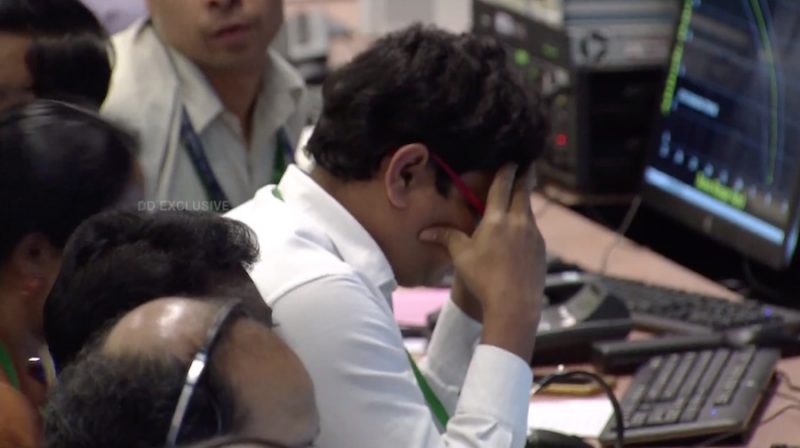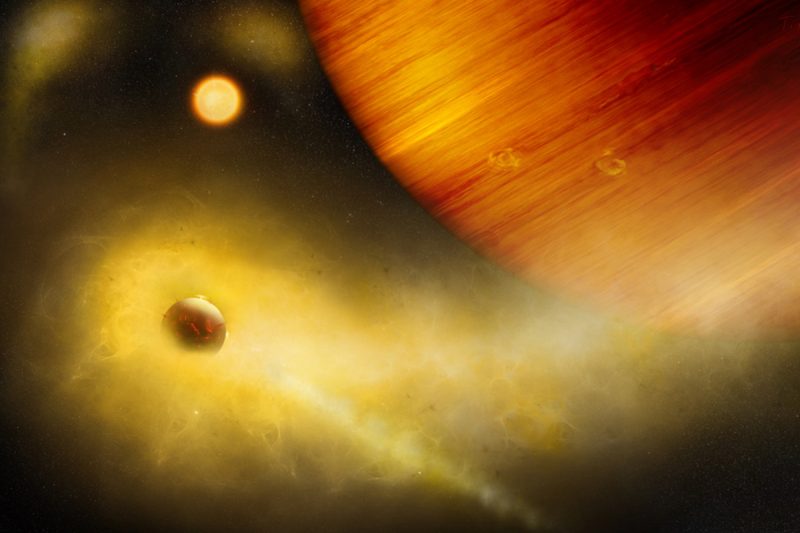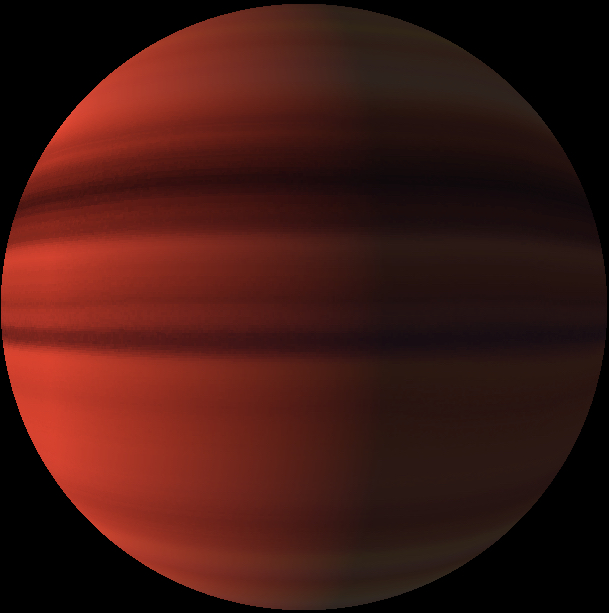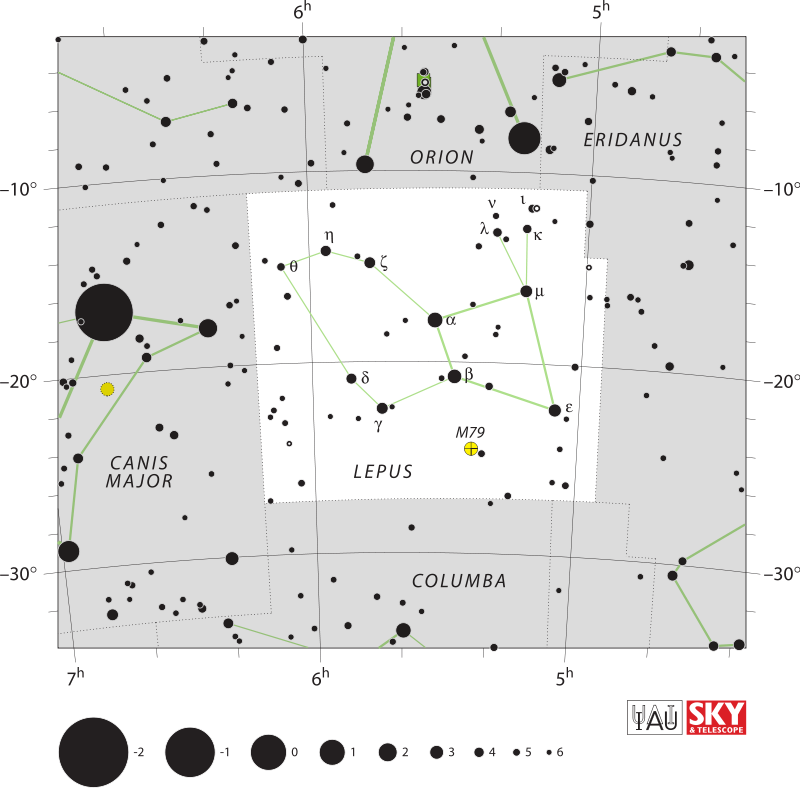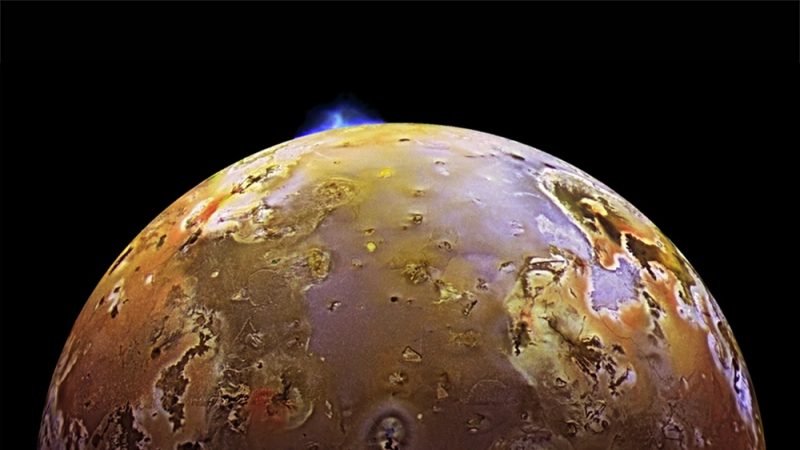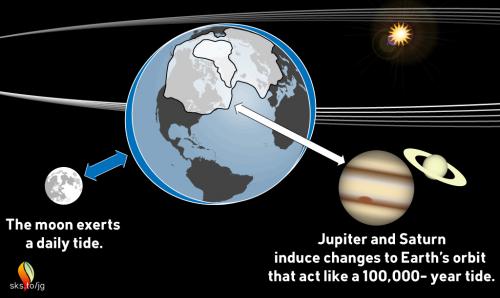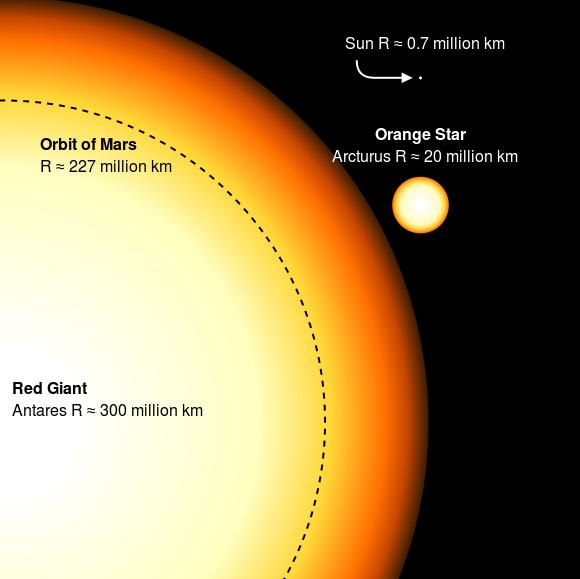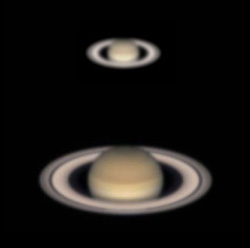Editor's Pick
Hundreds of climate sceptics to mount international campaign to stop net-zero targets being made law
Exclusive: The signatories are part of a network pushing for environmental deregulation after Brexit – and some have links with Boris Johnson’s cabinet

Some of the 400 climate deniers have links to the prime minister's top ministers ( Getty )
Hundreds of climate change deniers including academics, politicians and lobbyists are to launch a campaign to stop commitments to net zero carbon emissions being enshrined in law, The Independent can reveal.
A letter titled “There is no climate emergency” – which has been signed by 400 people who deem climate change to be a myth – is being sent to leaders of the European Union (EU) and United Nations (UN) institutions in the coming weeks ahead of key environment talks.
The group will take further steps, which are to be outlined in press conferences in Oslo, Brussels, The Hague and Rome.
The climate deniers are connected to a transatlantic network of think tanks pushing for environmental deregulation after Brexit, which also have a history of climate science denial.
The letter, obtained by investigative non-profit news organisation DeSmog, shows the group has links with members of Boris Johnson’s Cabinet.
Hundreds of climate sceptics to mount international campaign to stop net-zero targets being made law by Phoebe Weston, Environment, The Independent (UK), Sep 6, 2019
Click here to access the entire article.
Articles Linked to on Facebook
Sun Sep 1, 2019
[On vacation.]
Mon Sep 2, 2019
- Those Hurricane Maps Don’t Mean What You Think They Mean, Opinion by by Alberto Cairo with Tala Schlossberg, Sunday Review, New York Times, Sept 1, 2019
- Hurricane Dorian is a powerful Category 4 hurricane — pummeling the Bahamas and heading "dangerously close" to Florida by Brian Resnick, Energy & Environment, Vox, Sep 2, 2019
- 'My sister says global warming is a lie. How do I talk to her?' by Sarah Peach (Ask Sarah), Yale Clime Connections, Sep 2, 2019
- A Missing Link in Predicting Hurricane Damage by Donatella Pasqualini, Observations, Scientific American, Aug 30, 2019
- The Group Raising An NRA-Style ‘Army Of Environmental Super Voters’ Is Expanding by Alexander C Kaufman, Politics, HuffPost, Sep 1, 2019
Tue Sep 3, 2019
- ‘It’s Really Close’: How the Amazon Rainforest Could Self-Destruct by Max Fisher, The Interpreter, New York Times, Aug 30, 2019
- Where Is the Amazon Rainforest Vanishing? Not Just in Brazil by Simon Romero, World, New York Times, Aug 30, 2019
- Floods wreaking havoc on Great Lakes region fueled by climate crisis by Tom Perkins, Environment, Guardian, Sep 3, 2019
- Hurricane Dorian Finally Moving Again; Hurricane Watch Extended into North Carolina, Hurricane Center, The Weather Channel, Sep 3, 2019
- Why Are Hurricanes Like Dorian Stalling, and Is Global Warming Involved? by Bob Berwyn, InsideClimate News, Sep 3, 2019
- As Category 5 Dorian Devastates, Pope Francis Urges World to Act Fast on Climate Emergency by Andrea Germanos, Common Dreams, Sep 3, 2019
- Do the Brazil Amazon fires justify environmental interventionism?, Opinion by Lawrence Douglas, Comment is Free, Guardian, Aug 31, 2019
- How much destruction is needed for us to take climate change seriously?, Opinion by Kate Arnoff, Comment is Free, Guardian, Sep 3, 2019
Wed Sep 4, 2019
- Hurricane Dorian Is Not a Freak Storm by Rachel Gutman, Science, The Atlantic Magazine, Sep 3, 2019
- Local UK Governments Must Enact Climate Plans or Face Legal Action, Law Group Warns by Karen Savage, Climate Liability News, Sep 3, 2019
- As Hurricane Dorian skirts the Florida and Georgia coasts, a landfall in the Carolinas is not yet out of the question by Christina Maxouris, CNN, Sep 4, 2019
- CNN is giving 2020 Democrats 7 hours to talk about climate change by Umair Irfan, Politics & Policy, Vox, Sep 3, 2019
- Global heating made Hurricane Dorian bigger, wetter – and more deadly, Opinion by Michael Mann & Andrew E Dressler, Comment is Free, Guardian, Sep 4, 2019
- Hurricane Dorian’s path could slow the Gulf Stream, causing sea level rise on SC coast by Tony Bartelme, Hurricane, Charleston Post & Courier, Sep 3, 2019
- Democrats propose spending trillions fighting climate change by Juana Summers & Ellen Knickmeyer, AP News, Sep 4, 2019
- The growing power and anger of climate change voters by Maeve Reston, CNN, Sep 4, 2019
Thu Sep 5, 2019
- Asia's growing coal use could negate global climate change progress, UN says by Patpicha Tanakasempipat, Reuters, Sep 4, 2019
- Hurricane Dorian destruction set to cost Bahamas 'up to billions' by , Beaumont, World, Guardian, Sep 4, 2019
- Big Ag Is Sabotaging Progress on Climate Change by Timothy A Wise, Science, Wired, Aug 28, 2019
- What happened during CNN's climate town hall and what it means for 2020 by Stephen Collinson, CNN, Sep 5, 2019
- 6 winners and 3 losers from CNN’s climate town hall by Umair Irfan, David Roberts, Eliza Barclay, Ella Nilsen & Tara Golshan, Vox, Sep 5, 2019
- Hurricane Dorian Battering South Carolina, North Carolina With Flooding Rain, Storm Surge, High Winds, Tornadoes, Hurricane Central, The Weather Channel, Sep 5, 2019
- We watched all 7 hours of CNN’s climate town hall so you didn’t have to by Dan Zaks, Style, Washington Post, Sep 5, 2019
- Oil and gas companies undermining climate goals, says report by Jillian Ambrose, Environment, Guardian, Sep 5, 2019
Fri Sep 6, 2019
- Solar power could replace all US hydro dams using ‘just 13% of the space’ by Josh Gabbatiss, Carbon Brief, Aug 26, 2019
- Climate apartheid will only lead to more tragedies in the Mediterranean, Opinion by Carola Rackete, Comment is Free, Guardian, Sep 4, 2019
- Bahamas official warns people to prepare for the 'unimaginable' as hurricane death toll rises to 30 by Madeline Holcombe & Dakin Andone, CNN, Sep 6, 2019
- Bill McKibben: This Climate Strike Is Part of the Disruption We Need, Opinion by Bill McKibben, YES! Magazine, Sep 3, 2019
- Why methane emissions matter to climate change: 5 questions answered by Anthony J. Marchese & Dan Zimmerle, Environment & Energy, The Conversation US, Sep 4, 2019
- SkS Analogy 20 - The Tides of Earth by Evan & jg, Skeptical Science, Sep 5, 2019
- Media reaction: Amazon fires and climate change by Daisy Dunne & Robert McSweeney, Carbon Brief, Aug 27, 2019
Sat Sep 7, 2019
- Scientists monitoring new marine heat wave off B.C. coast similar to 'the Blob' by Rhianna Schmunk, Canada, British Columbia, CBC News, Sep 5, 2019
- Drought deepens as 'very dry winter' combines with record heat by Peter Hannam, Environment, Sydney Morning Herald, Sep 2, 2019
- The Bahamas' death toll is rising as 70,000 residents left homeless by Hurricane Dorian seek food and shelter by Victor Blackwell, Paula Newton & Christina Maxouris, CNN, Sep 7, 2019
- Dorian Makes Landfall at Cape Hatteras, North Carolina; Canada is Next by Jeff Masters, Category 6, Weather Underground, Sep 6, 2019
- The air above Antarctica is suddenly getting warmer – here’s what it means for Australia by Harry Hendon, Andrew B. Watkins, Eun-Pa Lim & Griffith Young , The Conversation AU, Sep 6, 2019
- Hundreds of climate sceptics to mount international campaign to stop net-zero targets being made law by Phoebe Weston, Environment, The Independent (UK), Sep 6, 2019
- Tourists and developers love Charleston. So do hurricanes. by Stephanie Hunt, Post Everything, Washington Post, Sep 5, 2019
from Skeptical Science https://ift.tt/2PUFEeW
Editor's Pick
Hundreds of climate sceptics to mount international campaign to stop net-zero targets being made law
Exclusive: The signatories are part of a network pushing for environmental deregulation after Brexit – and some have links with Boris Johnson’s cabinet

Some of the 400 climate deniers have links to the prime minister's top ministers ( Getty )
Hundreds of climate change deniers including academics, politicians and lobbyists are to launch a campaign to stop commitments to net zero carbon emissions being enshrined in law, The Independent can reveal.
A letter titled “There is no climate emergency” – which has been signed by 400 people who deem climate change to be a myth – is being sent to leaders of the European Union (EU) and United Nations (UN) institutions in the coming weeks ahead of key environment talks.
The group will take further steps, which are to be outlined in press conferences in Oslo, Brussels, The Hague and Rome.
The climate deniers are connected to a transatlantic network of think tanks pushing for environmental deregulation after Brexit, which also have a history of climate science denial.
The letter, obtained by investigative non-profit news organisation DeSmog, shows the group has links with members of Boris Johnson’s Cabinet.
Hundreds of climate sceptics to mount international campaign to stop net-zero targets being made law by Phoebe Weston, Environment, The Independent (UK), Sep 6, 2019
Click here to access the entire article.
Articles Linked to on Facebook
Sun Sep 1, 2019
[On vacation.]
Mon Sep 2, 2019
- Those Hurricane Maps Don’t Mean What You Think They Mean, Opinion by by Alberto Cairo with Tala Schlossberg, Sunday Review, New York Times, Sept 1, 2019
- Hurricane Dorian is a powerful Category 4 hurricane — pummeling the Bahamas and heading "dangerously close" to Florida by Brian Resnick, Energy & Environment, Vox, Sep 2, 2019
- 'My sister says global warming is a lie. How do I talk to her?' by Sarah Peach (Ask Sarah), Yale Clime Connections, Sep 2, 2019
- A Missing Link in Predicting Hurricane Damage by Donatella Pasqualini, Observations, Scientific American, Aug 30, 2019
- The Group Raising An NRA-Style ‘Army Of Environmental Super Voters’ Is Expanding by Alexander C Kaufman, Politics, HuffPost, Sep 1, 2019
Tue Sep 3, 2019
- ‘It’s Really Close’: How the Amazon Rainforest Could Self-Destruct by Max Fisher, The Interpreter, New York Times, Aug 30, 2019
- Where Is the Amazon Rainforest Vanishing? Not Just in Brazil by Simon Romero, World, New York Times, Aug 30, 2019
- Floods wreaking havoc on Great Lakes region fueled by climate crisis by Tom Perkins, Environment, Guardian, Sep 3, 2019
- Hurricane Dorian Finally Moving Again; Hurricane Watch Extended into North Carolina, Hurricane Center, The Weather Channel, Sep 3, 2019
- Why Are Hurricanes Like Dorian Stalling, and Is Global Warming Involved? by Bob Berwyn, InsideClimate News, Sep 3, 2019
- As Category 5 Dorian Devastates, Pope Francis Urges World to Act Fast on Climate Emergency by Andrea Germanos, Common Dreams, Sep 3, 2019
- Do the Brazil Amazon fires justify environmental interventionism?, Opinion by Lawrence Douglas, Comment is Free, Guardian, Aug 31, 2019
- How much destruction is needed for us to take climate change seriously?, Opinion by Kate Arnoff, Comment is Free, Guardian, Sep 3, 2019
Wed Sep 4, 2019
- Hurricane Dorian Is Not a Freak Storm by Rachel Gutman, Science, The Atlantic Magazine, Sep 3, 2019
- Local UK Governments Must Enact Climate Plans or Face Legal Action, Law Group Warns by Karen Savage, Climate Liability News, Sep 3, 2019
- As Hurricane Dorian skirts the Florida and Georgia coasts, a landfall in the Carolinas is not yet out of the question by Christina Maxouris, CNN, Sep 4, 2019
- CNN is giving 2020 Democrats 7 hours to talk about climate change by Umair Irfan, Politics & Policy, Vox, Sep 3, 2019
- Global heating made Hurricane Dorian bigger, wetter – and more deadly, Opinion by Michael Mann & Andrew E Dressler, Comment is Free, Guardian, Sep 4, 2019
- Hurricane Dorian’s path could slow the Gulf Stream, causing sea level rise on SC coast by Tony Bartelme, Hurricane, Charleston Post & Courier, Sep 3, 2019
- Democrats propose spending trillions fighting climate change by Juana Summers & Ellen Knickmeyer, AP News, Sep 4, 2019
- The growing power and anger of climate change voters by Maeve Reston, CNN, Sep 4, 2019
Thu Sep 5, 2019
- Asia's growing coal use could negate global climate change progress, UN says by Patpicha Tanakasempipat, Reuters, Sep 4, 2019
- Hurricane Dorian destruction set to cost Bahamas 'up to billions' by , Beaumont, World, Guardian, Sep 4, 2019
- Big Ag Is Sabotaging Progress on Climate Change by Timothy A Wise, Science, Wired, Aug 28, 2019
- What happened during CNN's climate town hall and what it means for 2020 by Stephen Collinson, CNN, Sep 5, 2019
- 6 winners and 3 losers from CNN’s climate town hall by Umair Irfan, David Roberts, Eliza Barclay, Ella Nilsen & Tara Golshan, Vox, Sep 5, 2019
- Hurricane Dorian Battering South Carolina, North Carolina With Flooding Rain, Storm Surge, High Winds, Tornadoes, Hurricane Central, The Weather Channel, Sep 5, 2019
- We watched all 7 hours of CNN’s climate town hall so you didn’t have to by Dan Zaks, Style, Washington Post, Sep 5, 2019
- Oil and gas companies undermining climate goals, says report by Jillian Ambrose, Environment, Guardian, Sep 5, 2019
Fri Sep 6, 2019
- Solar power could replace all US hydro dams using ‘just 13% of the space’ by Josh Gabbatiss, Carbon Brief, Aug 26, 2019
- Climate apartheid will only lead to more tragedies in the Mediterranean, Opinion by Carola Rackete, Comment is Free, Guardian, Sep 4, 2019
- Bahamas official warns people to prepare for the 'unimaginable' as hurricane death toll rises to 30 by Madeline Holcombe & Dakin Andone, CNN, Sep 6, 2019
- Bill McKibben: This Climate Strike Is Part of the Disruption We Need, Opinion by Bill McKibben, YES! Magazine, Sep 3, 2019
- Why methane emissions matter to climate change: 5 questions answered by Anthony J. Marchese & Dan Zimmerle, Environment & Energy, The Conversation US, Sep 4, 2019
- SkS Analogy 20 - The Tides of Earth by Evan & jg, Skeptical Science, Sep 5, 2019
- Media reaction: Amazon fires and climate change by Daisy Dunne & Robert McSweeney, Carbon Brief, Aug 27, 2019
Sat Sep 7, 2019
- Scientists monitoring new marine heat wave off B.C. coast similar to 'the Blob' by Rhianna Schmunk, Canada, British Columbia, CBC News, Sep 5, 2019
- Drought deepens as 'very dry winter' combines with record heat by Peter Hannam, Environment, Sydney Morning Herald, Sep 2, 2019
- The Bahamas' death toll is rising as 70,000 residents left homeless by Hurricane Dorian seek food and shelter by Victor Blackwell, Paula Newton & Christina Maxouris, CNN, Sep 7, 2019
- Dorian Makes Landfall at Cape Hatteras, North Carolina; Canada is Next by Jeff Masters, Category 6, Weather Underground, Sep 6, 2019
- The air above Antarctica is suddenly getting warmer – here’s what it means for Australia by Harry Hendon, Andrew B. Watkins, Eun-Pa Lim & Griffith Young , The Conversation AU, Sep 6, 2019
- Hundreds of climate sceptics to mount international campaign to stop net-zero targets being made law by Phoebe Weston, Environment, The Independent (UK), Sep 6, 2019
- Tourists and developers love Charleston. So do hurricanes. by Stephanie Hunt, Post Everything, Washington Post, Sep 5, 2019
from Skeptical Science https://ift.tt/2PUFEeW


